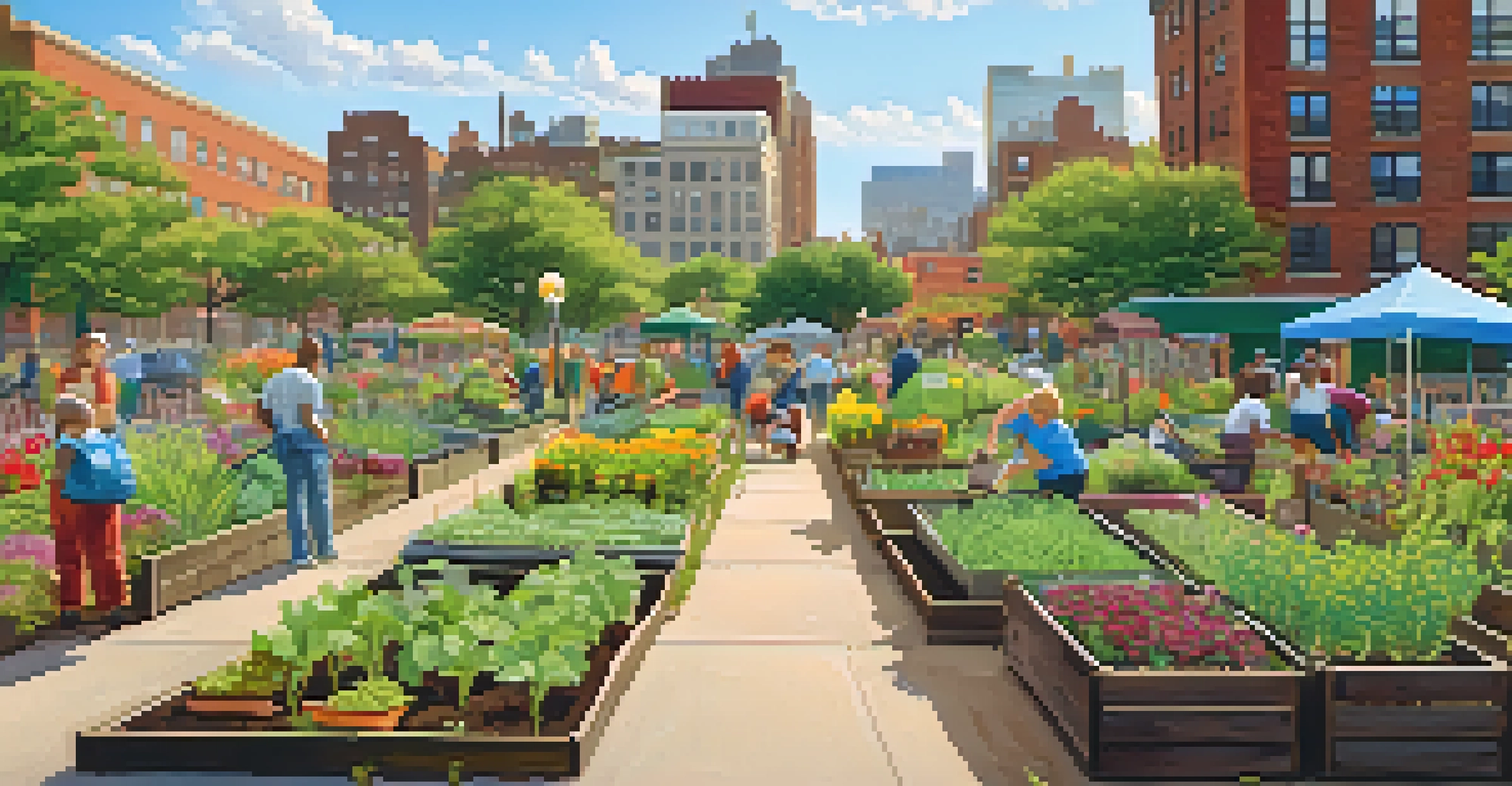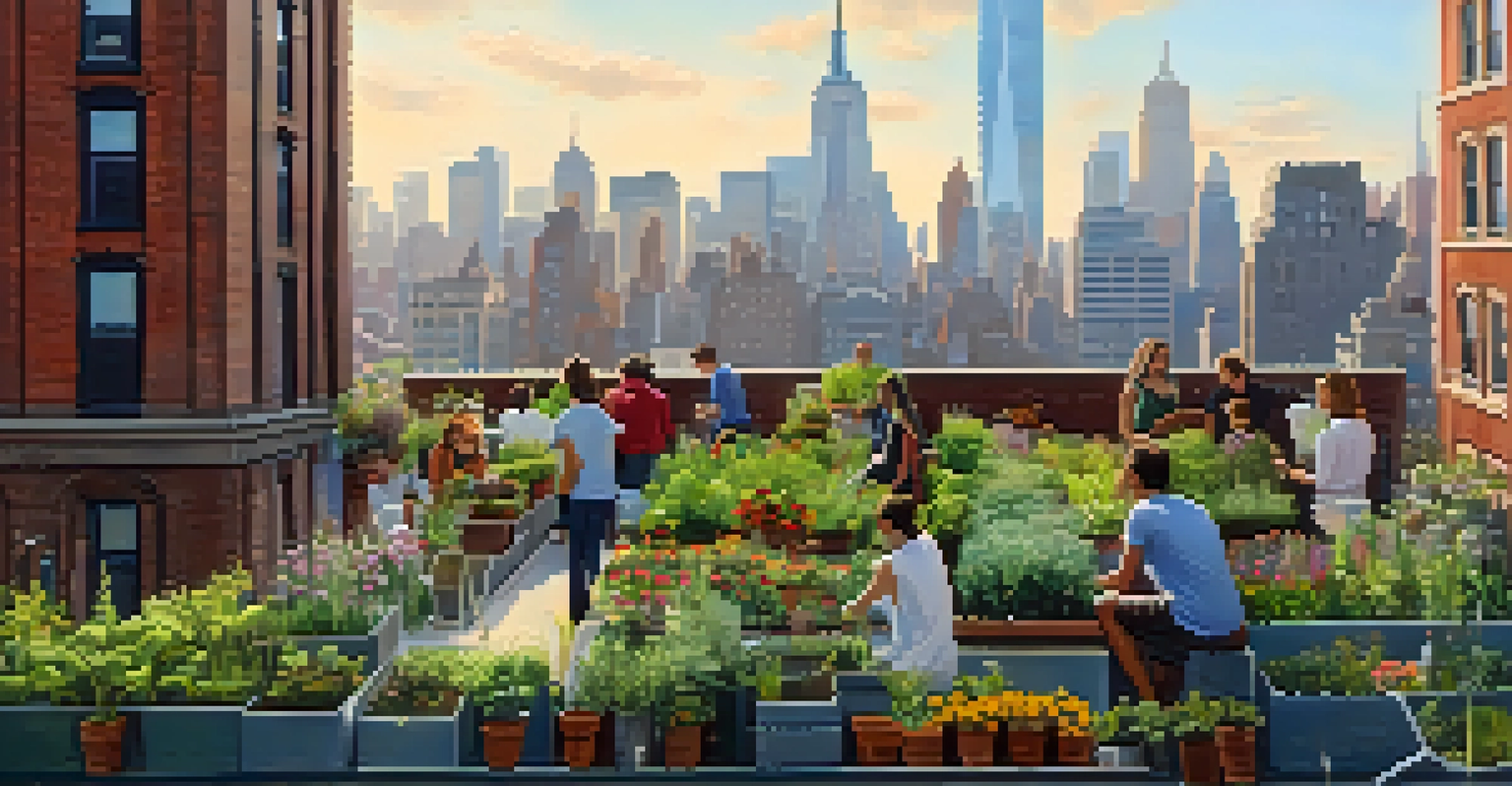Urban Green Spaces: Conservation Efforts in NYC

The Importance of Urban Green Spaces in NYC
Urban green spaces play a vital role in enhancing the quality of life in New York City. They provide essential benefits such as improving air quality, reducing urban heat, and offering a natural respite from the bustling city life. Parks and gardens also foster community engagement, bringing together diverse groups of people for recreation and social interaction.
The best time to plant a tree was twenty years ago. The second best time is now.
Moreover, these green spaces contribute significantly to biodiversity, serving as habitats for various species of birds, insects, and other wildlife. In a city known for its concrete jungle, these pockets of nature help maintain ecological balance and support the environment. Without these areas, the urban landscape would lack the vibrancy and resilience needed to thrive.
Additionally, urban greenery promotes mental well-being by providing an escape from the fast-paced city life. Studies have shown that spending time in nature can reduce stress, enhance mood, and improve overall mental health. This underscores the necessity of conserving and expanding green spaces in NYC to ensure a healthier, happier population.
Current State of Green Spaces in NYC
New York City boasts over 1,700 parks, covering approximately 14 percent of its land area. However, the distribution of these green spaces is not uniform, with some neighborhoods enjoying abundant greenery while others are starkly lacking. This disparity raises concerns about equitable access to nature, particularly for marginalized communities that may not have nearby parks or recreational areas.

The city's iconic Central Park is a prime example of urban greenery, but its beauty and history also highlight the importance of maintenance and conservation efforts. The park faces challenges from heavy foot traffic, climate change, and invasive species, all of which threaten its health and longevity. Addressing these issues requires proactive measures and community involvement.
Urban Green Spaces Enhance Life
Green spaces in NYC improve air quality, provide a refuge from urban life, and promote mental well-being.
Furthermore, smaller community gardens and pocket parks serve as essential green spaces for many neighborhoods. Though often overlooked, these areas contribute to local ecosystems and provide residents with a sense of ownership and pride. The preservation and enhancement of these smaller spaces are crucial for fostering community resilience and environmental sustainability.
Community Involvement in Conservation Efforts
Community involvement is a cornerstone of effective conservation efforts in NYC's green spaces. Local organizations and volunteers play a crucial role in maintaining parks, organizing clean-up events, and advocating for environmental justice. Their passion and dedication help ensure that these spaces remain vibrant and accessible to all residents.
In every walk with nature, one receives far more than he seeks.
One inspiring example is the MillionTreesNYC initiative, which aimed to plant one million new trees across the city. This ambitious project brought together thousands of volunteers, fostering a sense of community while improving the urban landscape. Such initiatives demonstrate that when residents come together, they can make a significant impact on their environment.
In addition, community gardens often serve as a hub for education and empowerment. These gardens not only provide fresh produce but also offer workshops and programs that teach sustainable practices. By engaging local residents in conservation efforts, these spaces become more than just a patch of greenery; they transform into vital resources for learning and community building.
City Policies Supporting Green Spaces
New York City's government has implemented several policies to support the conservation and expansion of green spaces. Initiatives like the NYC Parks Department's Green Infrastructure Program focus on integrating green elements into urban planning. This approach helps manage stormwater, improve air quality, and enhance the overall livability of neighborhoods.
Moreover, policies such as the NYC Urban Forest Agenda aim to increase tree canopy coverage across the city. By prioritizing tree planting and maintenance, these policies contribute to climate resilience and community health. The city's commitment to sustainability is evident in its efforts to balance urban development with ecological preservation.
Community Drives Conservation Efforts
Local organizations and volunteers are essential in maintaining and advocating for NYC's parks and green spaces.
However, the success of these policies largely depends on public awareness and community engagement. Ensuring that residents understand the importance of green spaces and their role in conservation is crucial. When citizens are informed and involved, they are more likely to support initiatives that protect and enhance their local environments.
Challenges Facing Urban Green Spaces
Despite the many benefits of urban green spaces, they face numerous challenges that threaten their viability. Climate change poses significant risks, leading to increased temperatures, extreme weather events, and shifting ecosystems. These changes can impact the health of existing parks and gardens, making conservation efforts all the more urgent.
Additionally, urban development continues to encroach upon green spaces, leading to habitat loss and fragmentation. As cities grow and evolve, the pressure to convert green areas into commercial or residential developments increases. This trend not only reduces the amount of accessible nature but also diminishes the ecological benefits that these spaces provide.
Another challenge is the ongoing problem of maintenance and funding. Many parks rely on city budgets or grants, which can fluctuate based on economic conditions. Without consistent resources, it becomes difficult to maintain existing green spaces and implement necessary improvements, highlighting the need for sustainable funding solutions.
Innovative Solutions for Sustainable Green Spaces
In response to the challenges facing urban green spaces, innovative solutions are emerging across New York City. For instance, the concept of 'green roofs' has gained popularity, allowing buildings to incorporate vegetation into their design. These roofs not only provide insulation and reduce energy costs but also create additional habitats for wildlife.
Another promising approach is the use of urban farming initiatives, which transform vacant lots into productive green spaces. By growing food locally, these projects not only address food insecurity but also promote community engagement and environmental education. Urban farms exemplify how creativity and collaboration can lead to sustainable solutions for urban living.
Policies Promote Sustainable Greens
City initiatives aim to expand and conserve green spaces, emphasizing the importance of public awareness and community engagement.
Furthermore, technology plays a vital role in enhancing green space management. Mobile apps and online platforms enable residents to report issues, track volunteer events, and connect with others who share their passion for conservation. By leveraging technology, communities can work together more effectively to protect and promote their urban green spaces.
The Future of Urban Green Spaces in NYC
Looking ahead, the future of urban green spaces in NYC depends on continued advocacy and community involvement. As awareness of environmental issues grows, more residents are likely to support conservation initiatives and demand better access to green areas. This shift in mindset can lead to more robust policies and funding dedicated to preserving these vital spaces.
Moreover, fostering partnerships between government agencies, non-profits, and local communities will be essential for future conservation efforts. Collaborative approaches can leverage resources, share knowledge, and create comprehensive strategies that address the unique challenges faced by different neighborhoods. Together, these stakeholders can work towards a greener, more sustainable New York City.

Ultimately, the preservation and enhancement of urban green spaces will have lasting impacts on the city's residents and ecosystems. By prioritizing these natural resources, NYC can cultivate a healthier environment that benefits everyone. The journey towards a greener future is ongoing, and every effort counts in making the city a more livable place.